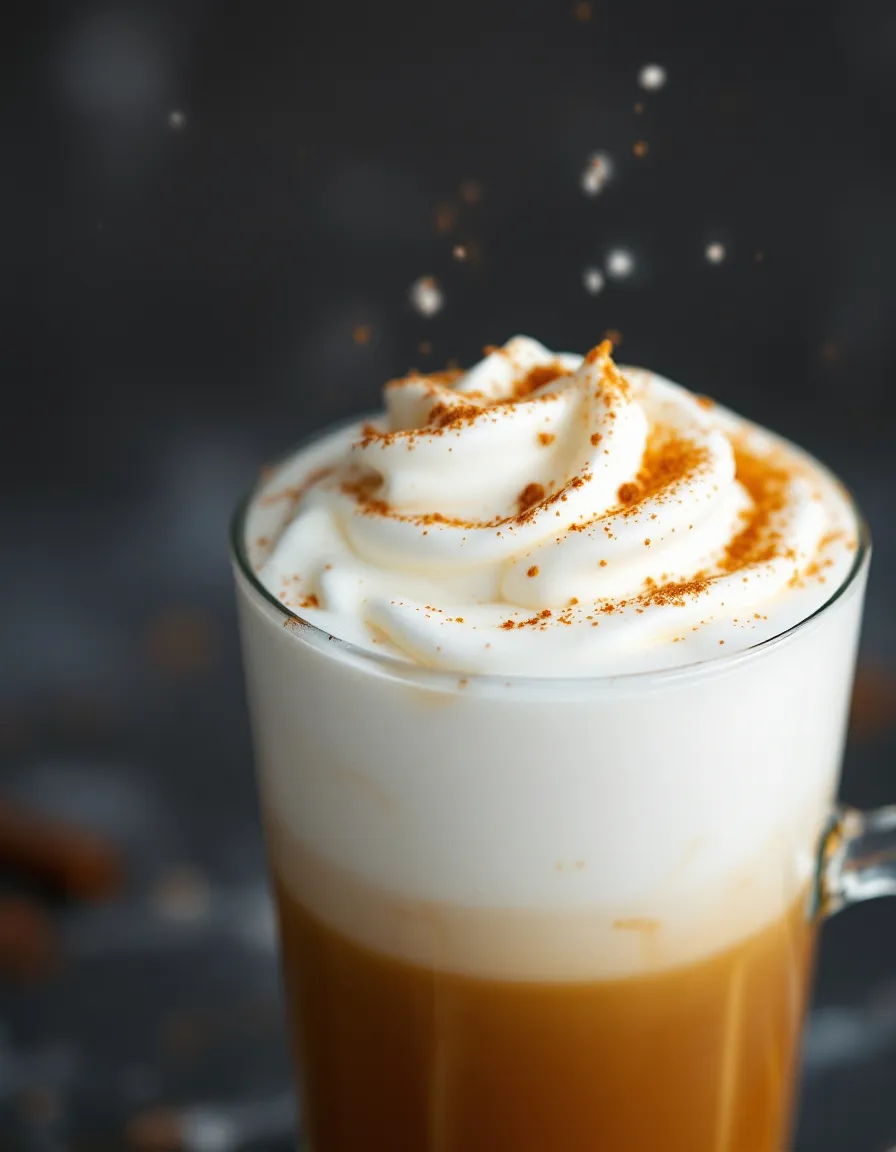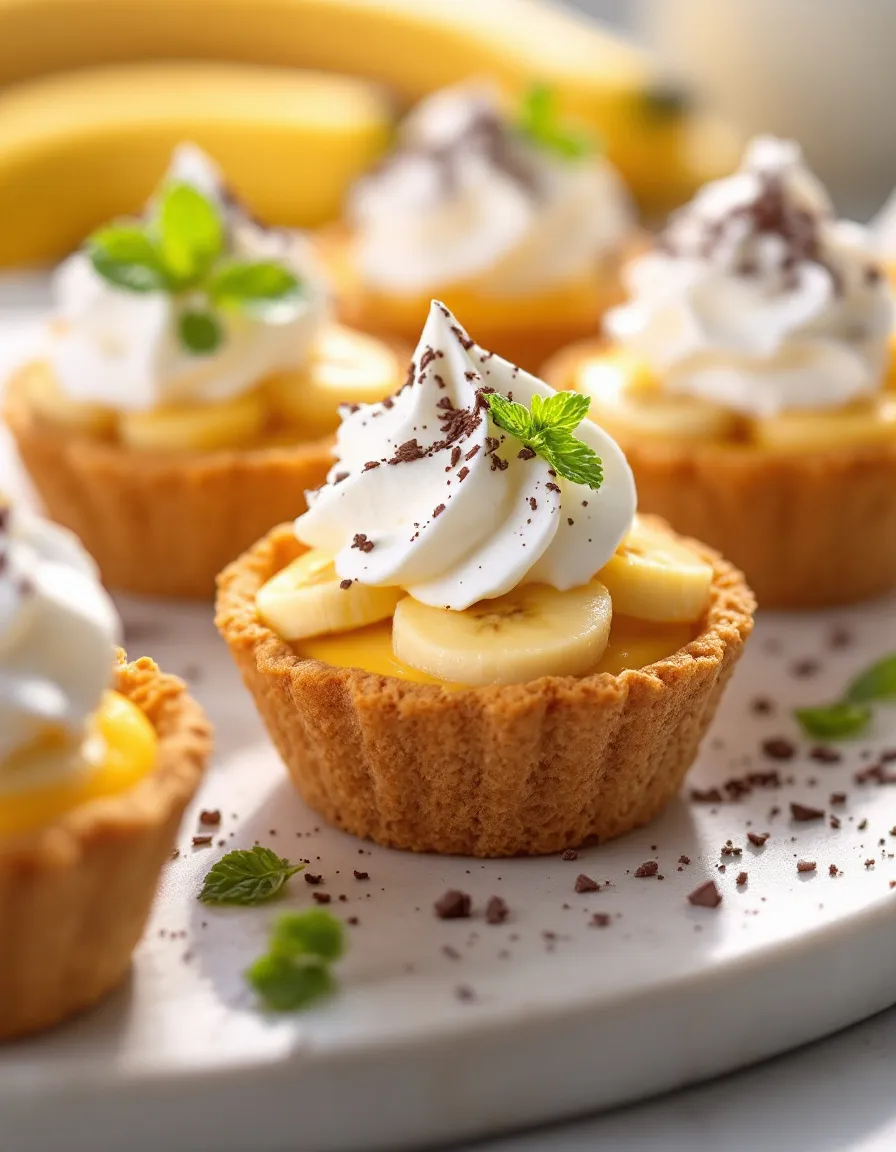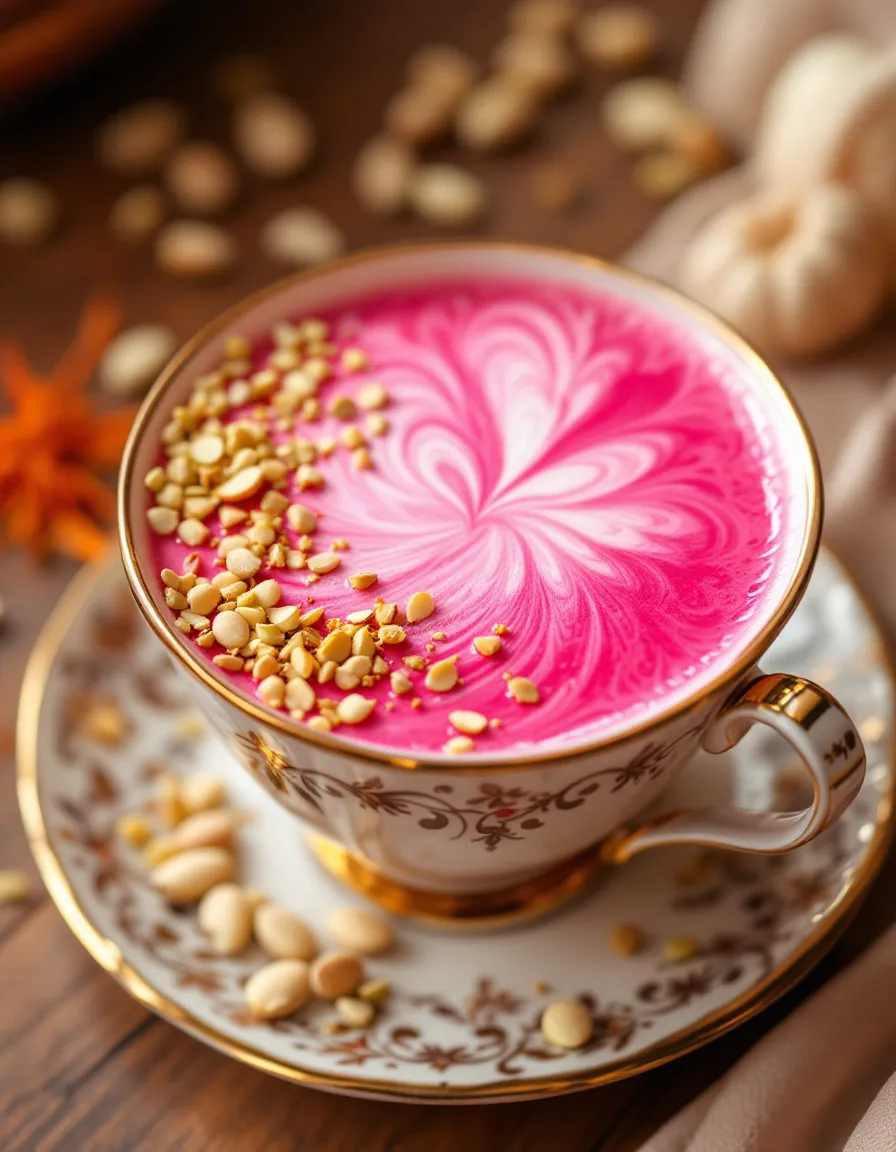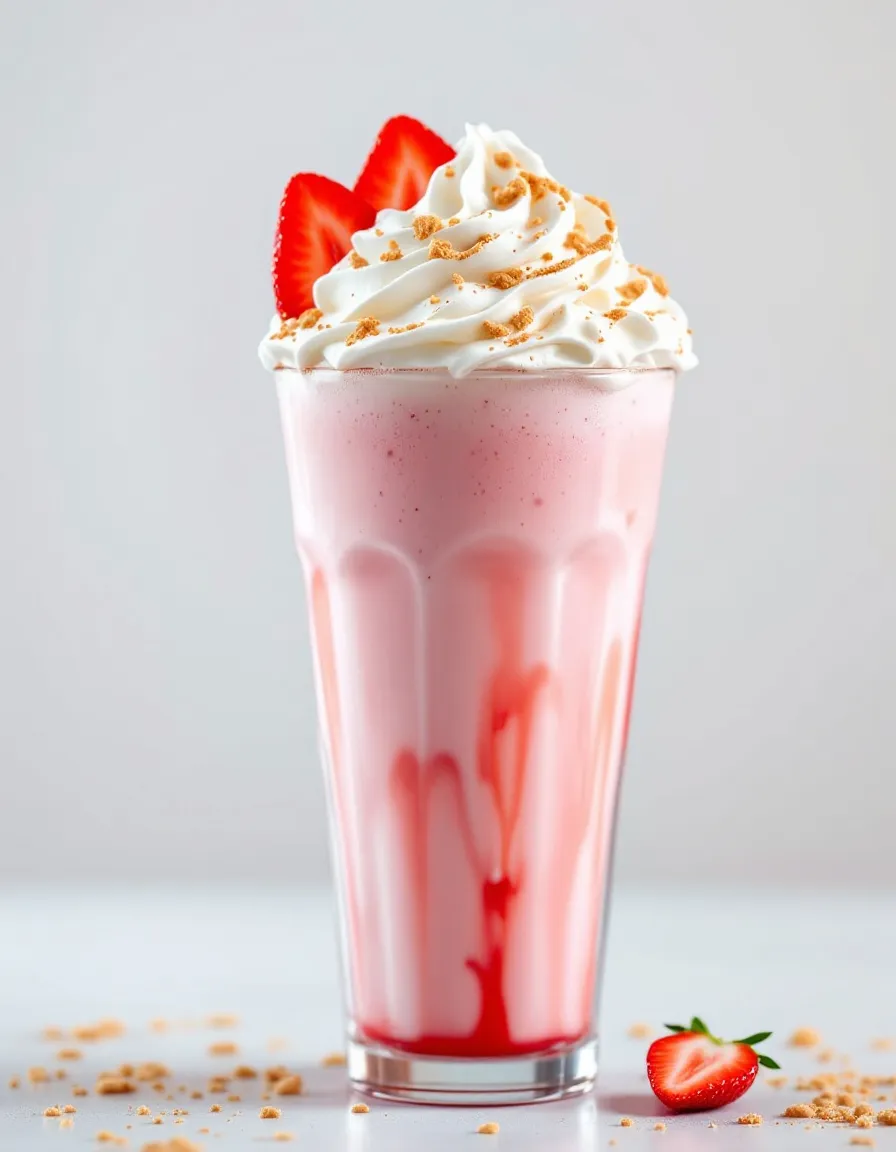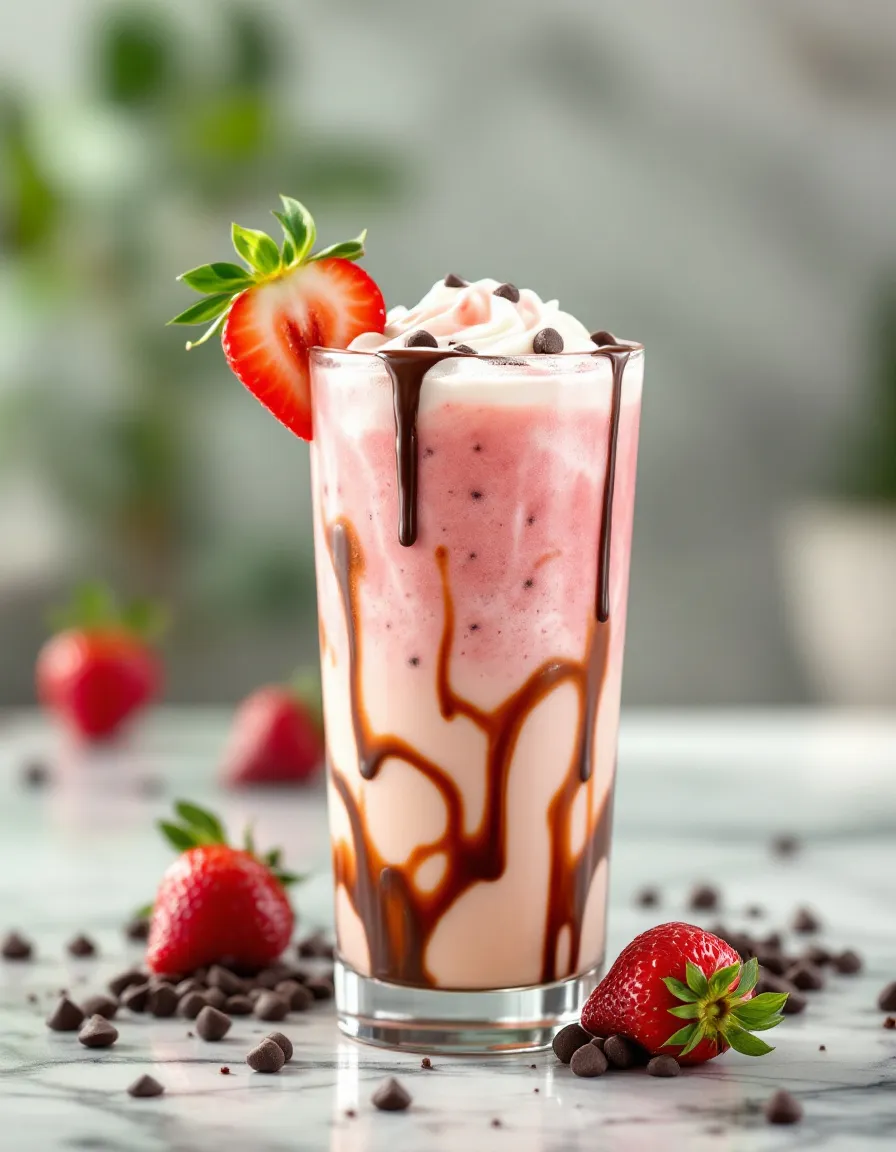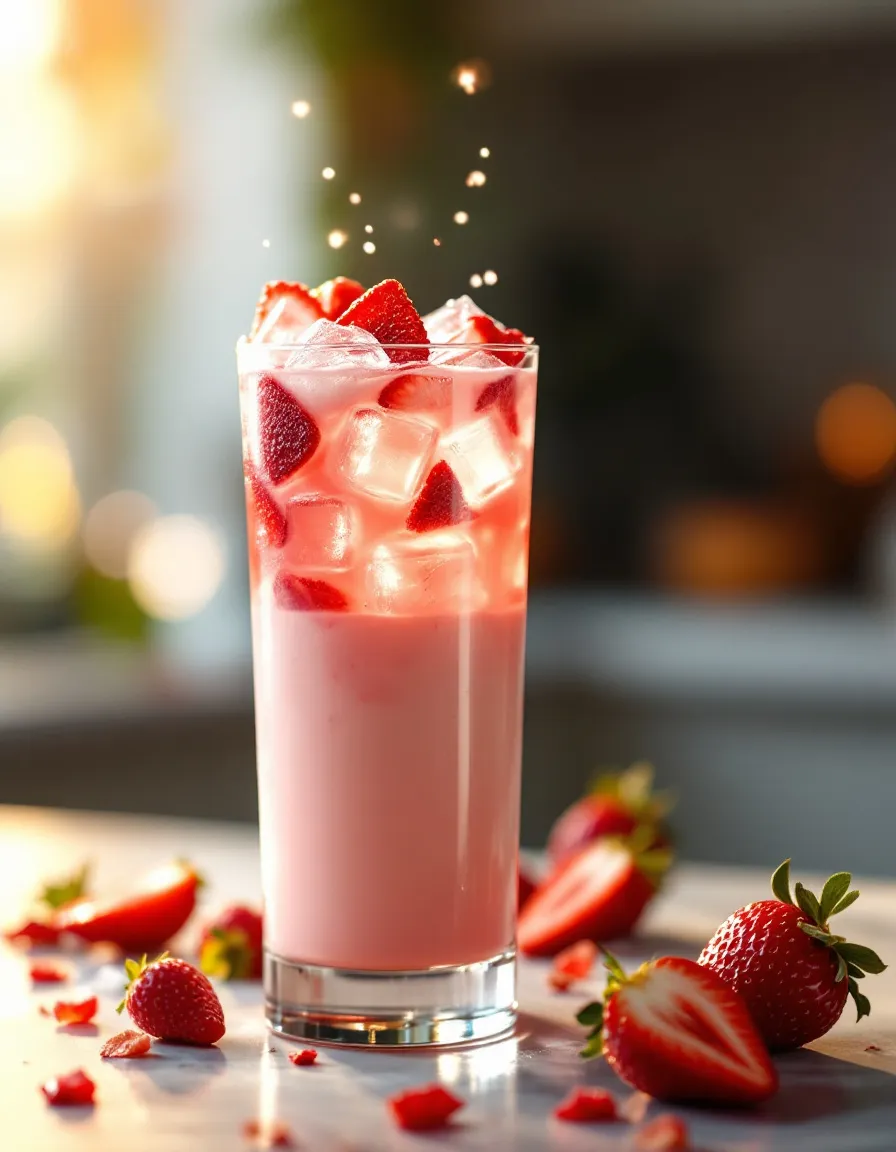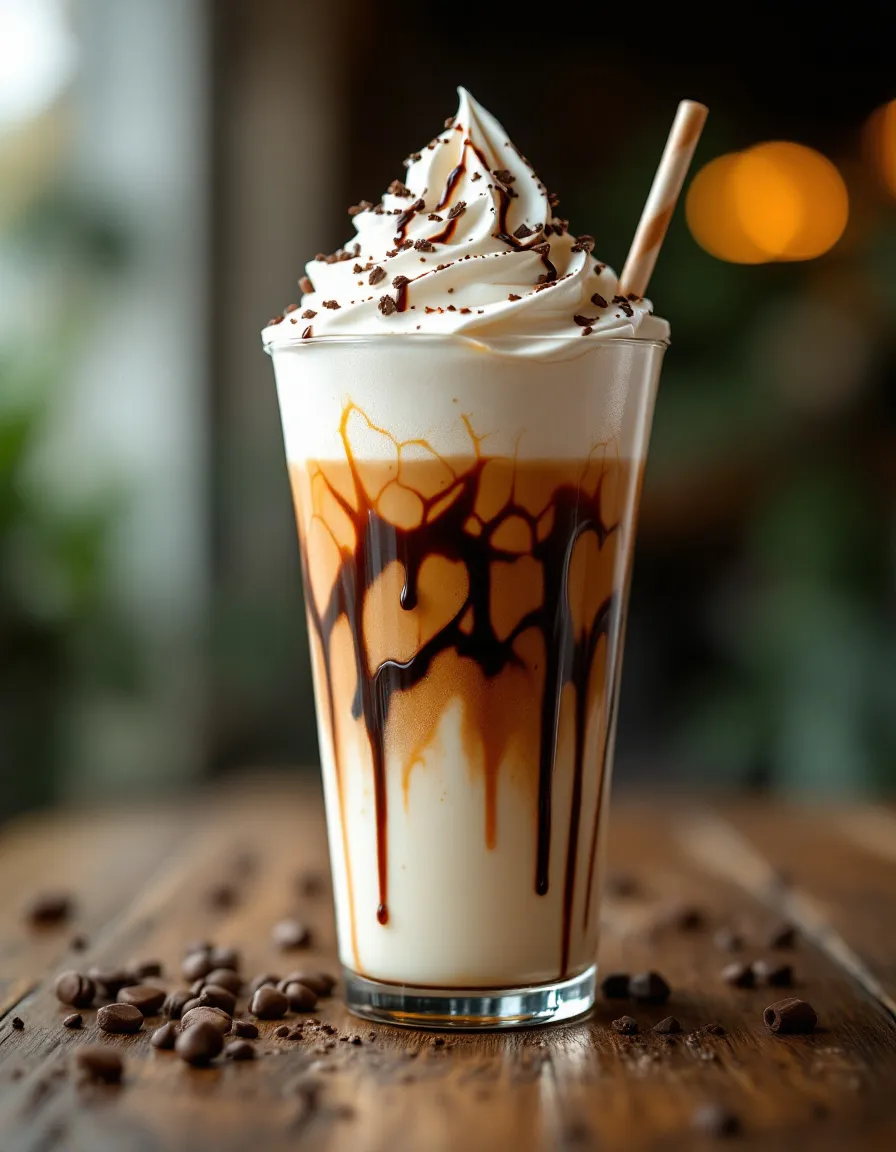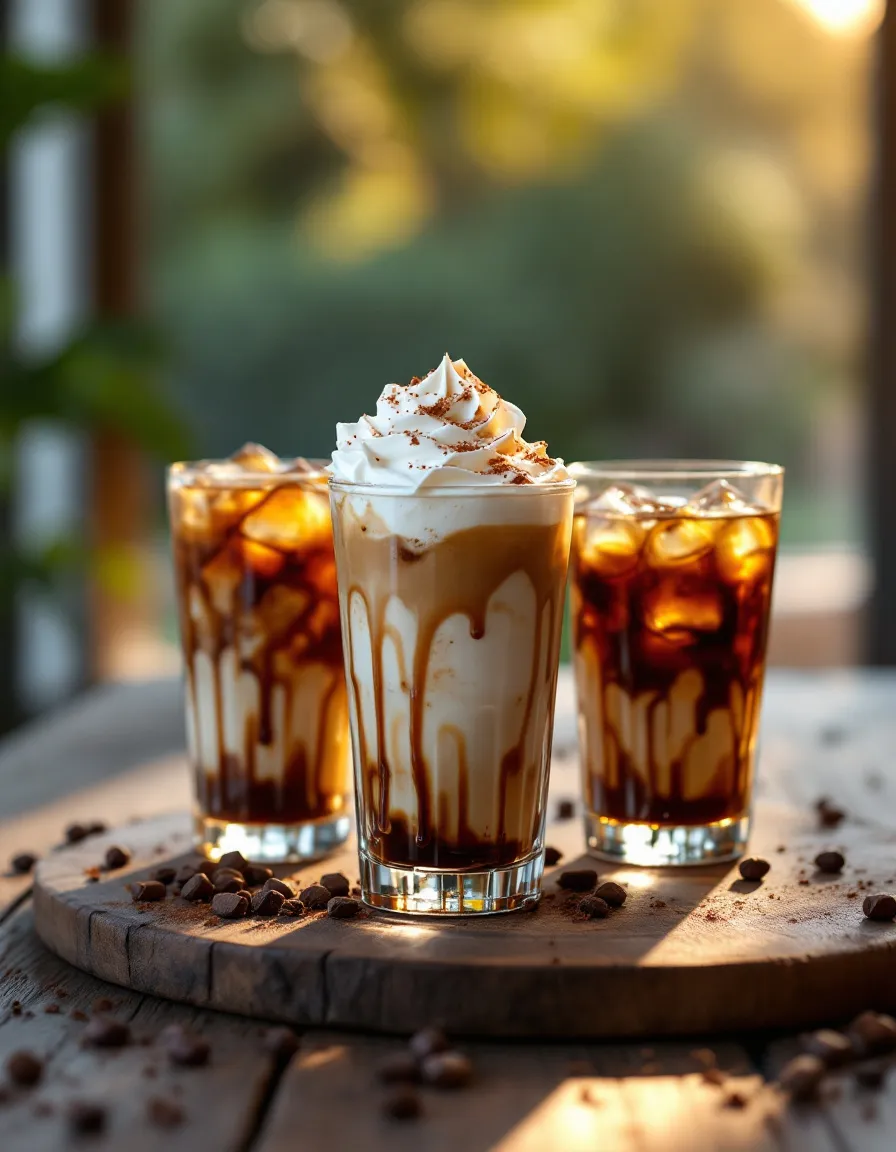Delicious Vanilla Bean Coconut Milk Latte: A Healthier Starbucks Drink at Home
The health-conscious among us often seek out delicious options that don’t compromise on flavor, and the Vanilla Bean Coconut Milk Latte is the perfect solution. If you’re a fan of Starbucks drinks but want to enjoy a healthier alternative at home, this recipe is for you. Combining the rich taste of vanilla with creamy coconut milk, this latte not only satisfies your coffee cravings but also brings an extra layer of nutrition. The subtle sweetness of vanilla paired with the smoothness of coconut milk gives this drink a velvety texture that delights the senses.
Imagine the aroma of fresh coffee wafting through your kitchen as you prepare this Vanilla Bean Coconut Milk Latte. It’s a glorious blend that’s equally comforting and invigorating. The simplicity of the ingredients makes it accessible for anyone, whether you’re an experienced barista or just starting your culinary journey. Enjoying a homemade latte means you can customize it to your taste and dietary needs, making it a versatile addition to your morning or afternoon routine.
Quick Recipe Highlights
- Flavor Profile: This latte features a delightful mix of rich vanilla and nutty coconut, creating a balanced sweetness without being overpowering.
- Texture: The coconut milk lends a creamy, smooth mouthfeel that beautifully complements the espresso.
- Aroma: The enticing fragrance of vanilla enhances the warm, inviting scent of brewed coffee, making each sip a sensory pleasure.
- Visual Appeal: The latte boasts a light beige color with a frothy top that is visually appealing, making it perfect for sharing on social media.
- Skill Level Needed: This recipe is easy enough for beginners yet rewarding for seasoned coffee lovers looking for a healthy twist.
- Special Equipment: All you need is a coffee maker, a frother for the milk, and a couple of cups to savor your creation.
Recipe Overview
- Difficulty Level: This Vanilla Bean Coconut Milk Latte is an uncomplicated recipe that requires only basic coffee-making skills, perfect for anyone looking to elevate their morning routine.
- Category: It fits well under beverages, specifically focusing on coffee-based drinks that can be enjoyed at any time of the day.
- Cuisine: Influenced by cafe culture around the globe, this latte channels the essence of modern coffee houses while emphasizing healthier alternatives.
- Cost: With about $5-7 for all the ingredients, you can create multiple servings that are well worth the investment.
- Season: This latte is ideal year-round but particularly enjoyable in cooler seasons when a warm drink is comforting.
- Occasion: Perfect for a weekend brunch, a warm treat during a chilly evening, or as a delightful boost to start your day.
Why You’ll Love This Recipe
The taste and texture appeal of this Vanilla Bean Coconut Milk Latte make it a go-to option for any latte lover. The creamy consistency and the sweet notes of vanilla perfectly balance the bitterness of the espresso. Each sip is a creamy delight, combining rich coffee with a smooth coconut finish that can brighten up your day.
Convenience and preparation benefits are significant, as this recipe requires minimal effort but offers maximum flavor. In less than 15 minutes, you can whip up an impressive drink that rivals your favorite coffee shop creations. It allows you to skip the long lines and save money while still enjoying a café-quality latte from home.
The nutritional advantages are another compelling reason to try this recipe. Coconut milk is a great dairy-free alternative that contains healthy fats and is lower in calories than traditional creams. This latte is not only more nutritious but also naturally free of lactose, making it suitable for those with dietary restrictions.
Social and entertaining value comes into play when you share this delightful drink with friends and family. Hosting a small gathering? Serve this latte to impress your guests with a barista-style experience right in your kitchen. You can even create a DIY coffee bar with different flavors and toppings for a fun and interactive brunch.
Finally, this Vanilla Bean Coconut Milk Latte is cost-effective and accessible. With just a few simple ingredients, you can create multiple servings that are far less expensive than specialty drinks from coffee shops. It’s an easy and satisfying way to indulge without breaking the bank.
Historical Background and Cultural Significance
The origin story of this drink can be traced back to the rise of coffee culture in the early 20th century, highlighting how different countries influence the way coffee is enjoyed. The integration of coconut into beverages often reflects tropical regions where it’s abundantly available, adding a flavor profile that symbolizes paradise in a cup.
Culturally, lattes have become synonymous with comfort and socialization, especially in café settings. This drink brings people together, offering a warm hug in a mug that fuels dialogue and fosters connection. Coffee gatherings resonate in every society, from bustling metropolises to quiet towns, reinforcing the beverage’s universal and comforting nature.
The evolution of the recipe has allowed for numerous adaptations, drawing inspiration from various global traditions. Today, health-conscious versions like the Vanilla Bean Coconut Milk Latte are popular, reflecting a shift towards more mindful eating and drinking habits.
Regional variations of lattes abound, with unique twists and flavor combinations reflecting local tastes. This Vanilla Bean Coconut Milk Latte is just one of many interpretations, yet its blend of vanilla and coconut resonates with many palates across the globe.
Ingredient Deep Dive
– **Vanilla Bean**: Vanilla has a rich history, highly sought after since the time of the Aztecs, who revered its flavor. Nutritionally, it’s known for its antioxidant properties. When selecting vanilla, look for plump and fragrant beans, and store them in a cool, dark place. Alternatives include vanilla extract or syrup.
– **Coconut Milk**: Produced by pressing fresh coconut meat, coconut milk has been a staple in many tropical cultures. Its rich, creamy consistency provides healthy fats beneficial for maintaining energy levels. Always choose high-quality coconut milk, and store it in an airtight container. If you can’t find coconut milk, almond or oat milk can also serve as suitable substitutes.
– **Espresso**: The heart of any good latte, espresso is a concentrated form of coffee brewed by forcing hot water through finely-ground coffee beans. It originated in Italy, evolving into the basis for countless coffee drinks. Opt for freshly roasted beans for the finest flavor, and store them in a cool, dark place. Instant coffee can be a quick substitute in a pinch but won’t achieve the same richness.
– **Sweetener (optional)**: Depending on your preference, you may wish to add sweetness. Honey, agave syrup, or any preferred sweetener will elevate the flavor. Always choose organic options when possible for the best quality.
Common Mistakes to Avoid
- Not warming the coconut milk properly, which can lead to a less creamy texture. Warm gently, but don’t let it boil.
- Using stale coffee can spoil the flavor. Always use freshly roasted and ground beans for best results.
- Choosing overly sweet vanilla syrup can mask the delicate flavors of the espresso. Use less and taste as you go.
- Not frothing the milk sufficiently can result in a flat drink without that delightful foam on top. Invest time in frothing for the best texture.
- Using low-quality coconut milk can significantly affect the taste and texture. Opt for full-fat versions for creaminess.
- Over-extracting your espresso can lead to a bitter taste. Aim for a 25-30 seconds extraction to achieve a balanced flavor.
- Neglecting to taste and adjust has a big impact. Be sure to try the latte as you go and modify sweetness and vanilla levels based on your palate.
- Not measuring your ingredients accurately can throw off the harmony of flavors. Precision is key in perfecting your latte.
- Skipping the vanilla bean in favor of artificial flavorings can detract from the natural sweetness found in the real thing.
- Failing to chill the coconut milk before blending can create a lukewarm drink. For iced versions, always start with chilled ingredients.
Essential Techniques
– **Frothing Milk**: Frothing milk is essential for adding a creamy texture to your latte. Use a hand frother or steam wand, and aim for velvety foam. Avoid overheating; the ideal temperature is between 160-170°F. Practice makes perfect—look for fine bubbles and a shiny surface for success.
– **Brewing Espresso**: Mastering espresso brewing is crucial for a balanced flavor. Use freshly ground beans, and tamp them evenly for optimal extraction. Pay attention to brew time and adjust your grind settings if the shot runs too fast or slow.
– **Flavor Balancing**: Achieving the perfect balance of coffee, coconut, and sweetness requires practice. Add sweeteners gradually and taste testers to find your ideal mix. Remember that flavors can intensify, so adjust gradually.
Pro Tips for Perfect Vanilla Bean Coconut Milk Latte
– Use high-quality, fresh ingredients for the best flavor. Your espresso choice, type of coconut milk, and sweetness all significantly contribute to the outcome.
– Blend your coconut milk for extra frothiness by mixing it before adding to your espresso. A whirl in the blender works wonders.
– Experiment with different espresso beans for unique flavors. Light roasts will yield a fruity taste, while dark roasts provide deeper, chocolatey notes.
– Create a special vanilla extract by steeping vanilla beans in bourbon or vodka for a personalized touch.
– For an extra flavorful twist, consider adding a pinch of cinnamon or nutmeg on top before serving.
– Don’t rush the frothing process. Take your time to achieve that velvety foam that truly elevates your latte.
– Customize your sweetness. Start with a small amount and build up slowly until you reach your desired flavor profile.
– Garnish with a sprinkle of cocoa powder or toasted coconut for added texture and visual appeal.
Variations and Adaptations
– Consider seasonal adaptations by incorporating pumpkin spice in the fall or cinnamon and nutmeg during winter holidays for festive flavors.
– Dietary modifications can make this latte suitable for various preferences. You can use almond or oat milk for a nutty taste or preference against coconut.
– Flavor variations can include adding caramel, hazelnut syrup, or even a shot of flavored coffee to personalize your drink to your liking.
– Explore different texture modifications by blending the coconut milk longer for an ultra-smooth drink or increasing foam for a creamier finish.
– For presentation alternatives, consider serving in a clear glass to showcase the layers of your latte, highlighting its beautiful colors.
Serving and Presentation Guide
Serve your Vanilla Bean Coconut Milk Latte in an attractive mug to enhance the drinking experience. Consider garnishing with a sprinkle of cocoa powder or cinnamon for added flavor and an appealing look. A dollop of whipped coconut cream can also elevate its indulgence factor.
For modern serving suggestions, use clear glass cups to showcase the latte’s rich colors, offering guests a visual treat. Pair your latte with light snacks such as biscotti or pastries for an elegant touch. Serve at a comfortable drinking temperature, ideally between 130-150°F, ensuring that it’s warm but not scalding.
Portion control tips are essential if serving at gatherings—consider offering small servings that guests can enjoy without feeling overwhelmed. Encourage sampling different toppings or flavors to create a fun tasting experience.
Wine and Beverage Pairing
For wine pairings, consider a light, fruity Pinot Grigio to complement the sweetness of the Vanilla Bean Coconut Milk Latte. The refreshing notes can balance the rich flavors nicely.
If you’re looking for non-alcoholic alternatives, consider pairing with sparkling water infused with lime, providing a refreshing contrast to the latte’s creaminess. Additionally, a light herbal tea can enhance the overall experience, providing relaxation alongside your coffee.
For coffee pairings, a light roast brewed with hints of fruit or floral notes can heighten your latte’s flavor profile. Serve at room temperature for those who enjoy a refreshing change from the warmth.
Storage and Shelf Life
Store any leftover Vanilla Bean Coconut Milk Latte in an airtight container in the refrigerator for up to two days. Reheat gently in the microwave or on the stovetop, stirring frequently to maintain the texture. Avoid prolonged exposure to air, and always check for fresh ingredients, especially coconut milk, before use.
If you wish to enjoy it later, consider freezing individual portions. Pour the prepared latte into ice cube trays, and once frozen, transfer to a zip-lock bag. You can add these cubes to smoothies or iced teas for a flavor boost.
Signs of spoilage include a sour smell or any changes in texture and color. Always ensure that your coconut milk is fresh and not past its expiration date before using.
Make Ahead Strategies
Create a prep timeline to streamline your morning routine. Brew your coffee the night before, and store it in the fridge. You can also prepare your coconut milk several days in advance. Always make sure to shake well before using, as natural separation can occur.
Storage between steps is essential. If you’ve made a larger batch, separate the whipped milk from the espresso before storing to maintain optimal taste and texture. Quality doesn’t deteriorate when it’s layered right.
Assess quality impact by preparing smaller batches at a time. This method ensures freshness without overwhelming flavors or textures. In your make-ahead strategies, always consider what components can be made and stored beforehand to simplify.
Scaling Instructions
Scaling this Vanilla Bean Coconut Milk Latte recipe is a breeze. To halve the recipe, simply divide all ingredients by two and use a smaller coffee maker if necessary.
For larger gatherings, double or triple the ingredients while ensuring your espresso machine can handle the volume. Make sure to brew in batches to maintain consistency in flavor and temperature.
Equipment adjustments may be necessary when scaling—consider using larger storage containers or additional brewing equipment to accommodate increased servings.
Timing modifications are also crucial, as more servings require a longer process, particularly if handling the espresso separately. Always prioritize brewing quality for the best results.
Storage considerations should factor in the increased servings. Ensure all ingredients are stored fresh, and store any leftovers safely as mentioned above.
Nutritional Deep Dive
A macro breakdown of the Vanilla Bean Coconut Milk Latte reveals a blend of carbohydrates, healthy fats, and protein primarily from the coconut milk, which helps maintain energy levels. It’s essential to remember that nutritional content varies based on the specific brands and types of products used.
In terms of micronutrient analysis, coconut milk is rich in several vitamins and minerals including potassium and magnesium, contributing to a balanced diet. The antioxidants in vanilla provide additional health benefits, promoting well-being.
When considering health benefits, this recipe provides a low-calorie alternative to heavy cream-based lattes while still offering satisfying flavors. It’s an excellent choice for those looking for a guilt-free indulgence.
Dietary considerations are essential as you adapt the recipe to various needs. This latte can be easily modified for gluten-free, dairy-free, and vegan diets, making it a versatile option for all.
Portion analysis should also consider personal dietary goals, with notes on calorie control depending on how much sweetness is added, as well as any additional flavors or complementary snacks paired with it.
Dietary Adaptations
For a gluten-free version, this latte is already suitable as all its components are gluten-free. However, it’s essential to check any added sweeteners or flavorings for gluten content.
Making it dairy-free is easy by simply using coconut milk as specified, ensuring no other dairy ingredients are introduced. Check flavored syrups used to ensure they’re also dairy-free.
For a vegan adaptation, ensure that sweeteners are plant-based, and feel free to explore different non-dairy individual cups if desired.
Low-carb adaptations can be achieved by reducing or eliminating sweeteners entirely or replacing them with keto-approved options like erythritol or stevia.
A keto-friendly approach can include counting the carbs in the coconut milk used and replacing any added sugars with keto-friendly additives that still bring sweetness without the carbs.
Additionally, baking or blending the ingredients into smoothies can offer a Paleo version of this drink while still incorporating the essence of coconut and vanilla.
Troubleshooting Guide
For texture issues, if your latte is too watery, consider adding more creaminess by increasing the amount of coconut milk used or by double frothing to add body.
When facing flavor balance concerns, always taste as you go. Adjust the sweetness and vanilla levels until you find the perfect harmony that suits your palate.
Temperature problems often arise from overheating or not heating enough. Aim for ideal temperature ranges, testing as you go to encourage perfect warmth with each sip.
Equipment challenges can lead to issues with frothing or brewing. Familiarize yourself with your tools and experiment with different techniques for success.
Ingredient substitutions can alter the intended taste; always take note of how different types of coconut milk or sweeteners may impact the final drink.
Timing concerns arise typically when brewing espresso. Pay close attention to your shots, as longer extraction times can lead to bitterness, while faster shots may be under-extracted.
Recipe Success Stories
Community feedback for the Vanilla Bean Coconut Milk Latte has been positive, with many users praising the rich flavor and creamy texture achieved at home. Individuals have reported successfully creating this drink without disappointment.
Variation successes often come from substituting different coconut milks or experimenting with flavored syrups, leading to unique adaptations that many find pleasing. Enthusiasts have often suggested adding seasonal spices for even richer flavors.
Adaptation stories highlight readers utilizing different lactose-free or non-dairy ingredients that cater to their dietary needs while still enjoying the luscious flavors of the original recipe.
Photography tips ensure your homemade lattes look as good as they taste. Natural lighting can accentuate the drink’s colors, creating inviting photos to share with friends and family.
Frequently Asked Questions
Can I use regular milk instead of coconut milk?
Yes, regular milk can be used if you prefer a more traditional latte. However, this recipe highlights coconut milk for its unique flavor and dairy-free benefits.
Is this recipe suitable for vegans?
Absolutely! The drink is created using only plant-based ingredients, making it a great option for vegans.
Can I sweeten my latte differently?
Certainly! Feel free to use your preferred sweetener, whether it’s honey, stevia, or a flavored syrup. Adjust the sweetness according to your taste.
How long can I store leftovers?
Leftovers can be stored in an airtight container for up to two days in the refrigerator. Reheat gently before consuming.
Should I strain the coconut milk before using?
It’s not necessary to strain coconut milk; use it directly as it contains the creamy goodness you want for your latte.
What type of coffee should I use?
A good quality espresso is recommended for a rich and authentic coffee flavor. You can use pre-ground espresso or grind your own beans fresh.
Is it possible to make this iced?
Yes! Simply allow the latte to cool after brewing and serve it over ice, or blend with ice for a frozen treat.
Can I add flavorings?
Absolutely! Add flavored syrups or spices to personalize your latte, like hazelnut, caramel, or seasonal spices.
Is there a way to make this latte lower in calories?
For a lower-calorie version, reduce or eliminate added sweeteners and choose a light coconut milk option.
How can I achieve a perfect froth?
Ensure your coconut milk is well-shaken or agitated before frothing, and use the right amount of steam or frothing time for achieving a velvety texture.
Additional Resources
If you enjoyed this Vanilla Bean Coconut Milk Latte, you might also like our related recipes for chai lattes and matcha lattes. Additionally, explore technique guides on how to brew the perfect espresso and froth milk like a pro.
For ingredient information, consider looking into the differences between coconut milk brands and their unique properties. Equipment recommendations can also help you choose the best tools for making your coffee creations, ensuring that you have the right setup for success.
Lastly, don’t forget to check out seasonal variations that celebrate flavors like pumpkin spice in the fall or peppermint in the winter for tailored experiences to your palates.
Join the Conversation
Share your thoughts and experiences with the Vanilla Bean Coconut Milk Latte on social media! Use our designated hashtag to connect with other coffee enthusiasts and showcase your beautiful creations.
For the best photography tips, focus on well-lit areas or natural backdrops that amplify your drink’s aesthetic. Join our community and post reviews of your adaptations to build connections with fellow recipe explorers.
Feel free to start discussions about variations you’ve created, and share what worked and what didn’t to enhance others’ experiences. Your feedback can inspire someone else to create their perfect cup!
The Recipe
Vanilla Bean Coconut Milk Latte
Serves: 2
Prep Time: 5 mins
Cook Time: 10 mins
Total Time: 15 mins
Kitchen Equipment Needed
- Coffee maker or espresso machine
- Milk frother (optional)
- Measuring spoons
- Cup for serving
Ingredients
- 2 shots of espresso
- 1 cup coconut milk
- 1 tablespoon vanilla bean paste or syrup
- Sweetener to taste (optional)
Directions
- Brew two shots of espresso and set aside.
- In a small saucepan, heat the coconut milk over medium heat until warm, but not boiling.
- Using a frother, froth the coconut milk until creamy and foamy.
- Add the vanilla bean paste or syrup to the espresso and stir to combine.
- Pour the frothed coconut milk over the espresso and slowly combine.
- Sweeten to taste if desired and serve immediately.
Recipe Notes
- Feel free to adjust the sweetness to your liking.
- This latte can be served iced by pouring it over ice.
- Experiment with additional flavors like caramel or hazelnut for variety.
